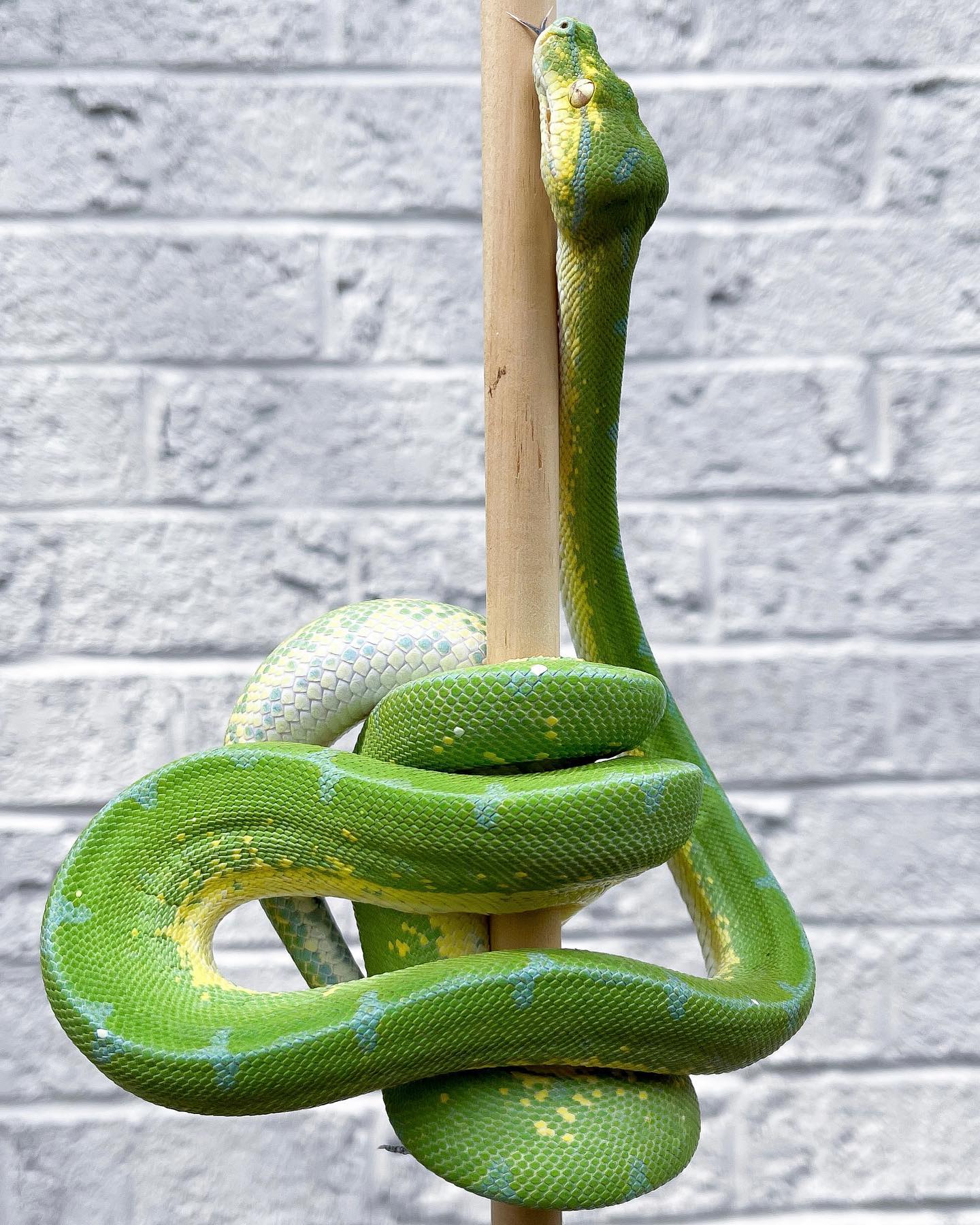
Ball Pythons: Terrestrial or Semi-Arboreal?
A hot debate in the ball python discussion groups as of late is housing, of course, and why they need height because they’re semi-arboreal. Wait… What? Since when?
First, let’s discuss these terms. Arboreal means an animal that lives above ground for the majority of its life. This means they eat, sleep, mate, and sometimes even lay eggs above ground. Semi-Arboreal means that animal spends at least 50% of their lives above ground, often sleeping and eating in trees. Terrestrial means the animal spends the majority of their lives at ground level.
 This is a typical tree snake, a Green Tree Python. They spend the majority of their lives on branches. GTP keepers will tell you that if they find their snakes “grounded,” it’s very concerning. They need their water accessible from their favored perch and will eat while perched as well.
This is a typical tree snake, a Green Tree Python. They spend the majority of their lives on branches. GTP keepers will tell you that if they find their snakes “grounded,” it’s very concerning. They need their water accessible from their favored perch and will eat while perched as well.
These arboreal snakes are slender with very long, prehensile tails. They are quick, well balanced, and very strong for their size; perfect for cruising the canopy.
Thank you to Coastal Chondros & Designs for use of the above pictured Green Tree Python.
Let’s talk about Reticulated Pythons. Why Retics? Because they are, in fact, semi-arboreal. They are the longest snake species in the world. They are semi-arboreal because they spend a lot of their lives in trees as youngsters and sub-adults.

Notice the two young pythons above. They are slender in build with LONG tails. Those tails are great for gripping branches and their slender build makes it easier for them to balance. Once Reticulated Pythons become large adults, over 15′, they are too heavy to climb most trees and will spend most of their time on the ground.

Finally, on to Ball Pythons. Ball Pythons are heavy-bodied snakes with short tails. As youngsters, they are small and more agile. They are known to climb a bit in the wild to escape predation or grab an easy meal in a bird’s nest not too far off the ground, especially males. However, this stage wears off quickly, especially if they’re well-fed.

Exhibit A above. This is Sonny, one of our breeder males. He had to be rescued from falling off this chair several times during this photo session. You can see how thick he is as compared to the longer reticulated girls above. You can’t see his tail here, but trust me, it’s short…
The picture below has two male ball pythons side by side showing their body structure. As you can see, they are thick and their tails taper dramatically. These are not climbing tails.

So, if they’re not semi-arboreal, why does my ball python like to climb in his cage?
There are a few reasons your BP may like to reach for the stars and may even do a tree-python impersonation on a perch. The most common reasons are husbandry and the outside environment.
- He may be seeking the warmest spot in his enclosure.
Check your temps, your temp gauges, cover ventilation to hold in heat, move it away from a window or exterior door. - He may be feeling insecure in his enclosure.
If you use glass, see the post about modifying your glass tank. Move the enclosure to a quieter room. Make sure it’s not near a TV or other electronic device. Don’t let your other bigger animals sit near or on the enclosure. - He may be hunting.
If it’s near feeding day, he may be anticipating food. If he does it well before feeding day, check the feeding and housing page to make sure you’re feeding enough of a meal. - He may be looking for the ladies.
If you have mature snakes of both sexes in the house, they may become more active during the typical breeding season (late fall through early spring). - Maybe he’s not “really” climbing.
Moving over obstacles in a small, enclosed space that are 6-12″ off the ground isn’t really climbing…


